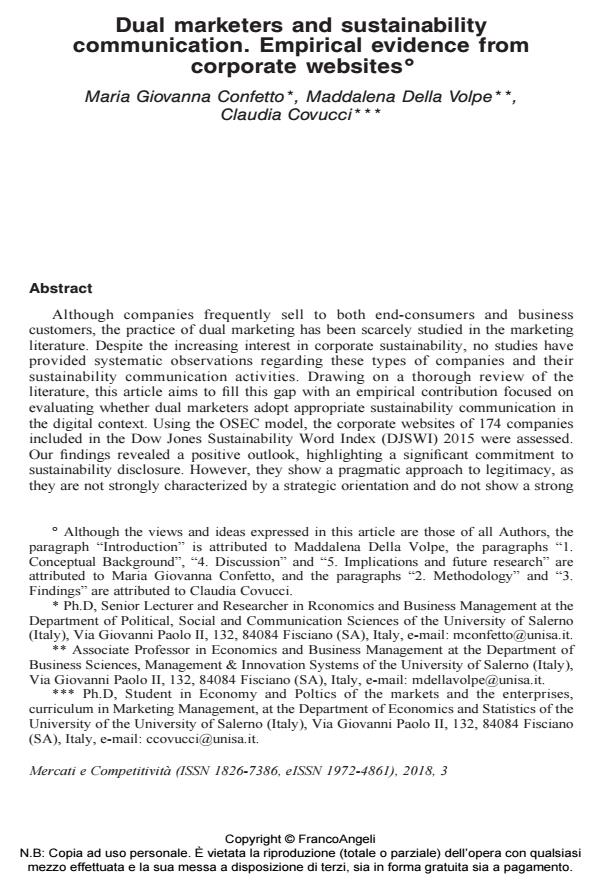Dual marketers and sustainability communication. Empirical evidence from corporate websites
Titolo Rivista MERCATI & COMPETITIVITÀ
Autori/Curatori Maria Giovanna Confetto, Maddalena Della Volpe, Claudia Covucci
Anno di pubblicazione 2018 Fascicolo 2018/3
Lingua Inglese Numero pagine 28 P. 41-68 Dimensione file 129 KB
DOI 10.3280/MC2018-003004
Il DOI è il codice a barre della proprietà intellettuale: per saperne di più
clicca qui
Qui sotto puoi vedere in anteprima la prima pagina di questo articolo.
Se questo articolo ti interessa, lo puoi acquistare (e scaricare in formato pdf) seguendo le facili indicazioni per acquistare il download credit. Acquista Download Credits per scaricare questo Articolo in formato PDF

FrancoAngeli è membro della Publishers International Linking Association, Inc (PILA)associazione indipendente e non profit per facilitare (attraverso i servizi tecnologici implementati da CrossRef.org) l’accesso degli studiosi ai contenuti digitali nelle pubblicazioni professionali e scientifiche
Although companies frequently sell to both end-consumers and business customers, the practice of dual marketing has been scarcely studied in the marketing literature. Despite the increasing interest in corporate sustainability, no studies have provided systematic observations regarding these types of companies and their sustainability communication activities. Drawing on a thorough review of the literature, this article aims to fill this gap with an empirical contribution focused on evaluating whether dual marketers adopt appropriate sustainability communication in the digital context. Using the OSEC model, the corporate websites of 174 companies included in the Dow Jones Sustainability Word Index (DJSWI) 2015 were assessed. Our findings revealed a positive outlook, highlighting a significant commitment to sustainability disclosure. However, they show a pragmatic approach to legitimacy, as they are not strongly characterized by a strategic orientation and do not show a strong commitment to stakeholder interaction and engagement. These results provide indications for helping dual marketers improve their digital sustainability communication.
Parole chiave:Dual marketing, sustainability communication, corporate sustainability, stakeholder engagement, corporate website
Maria Giovanna Confetto, Maddalena Della Volpe, Claudia Covucci, Dual marketers and sustainability communication. Empirical evidence from corporate websites in "MERCATI & COMPETITIVITÀ" 3/2018, pp 41-68, DOI: 10.3280/MC2018-003004